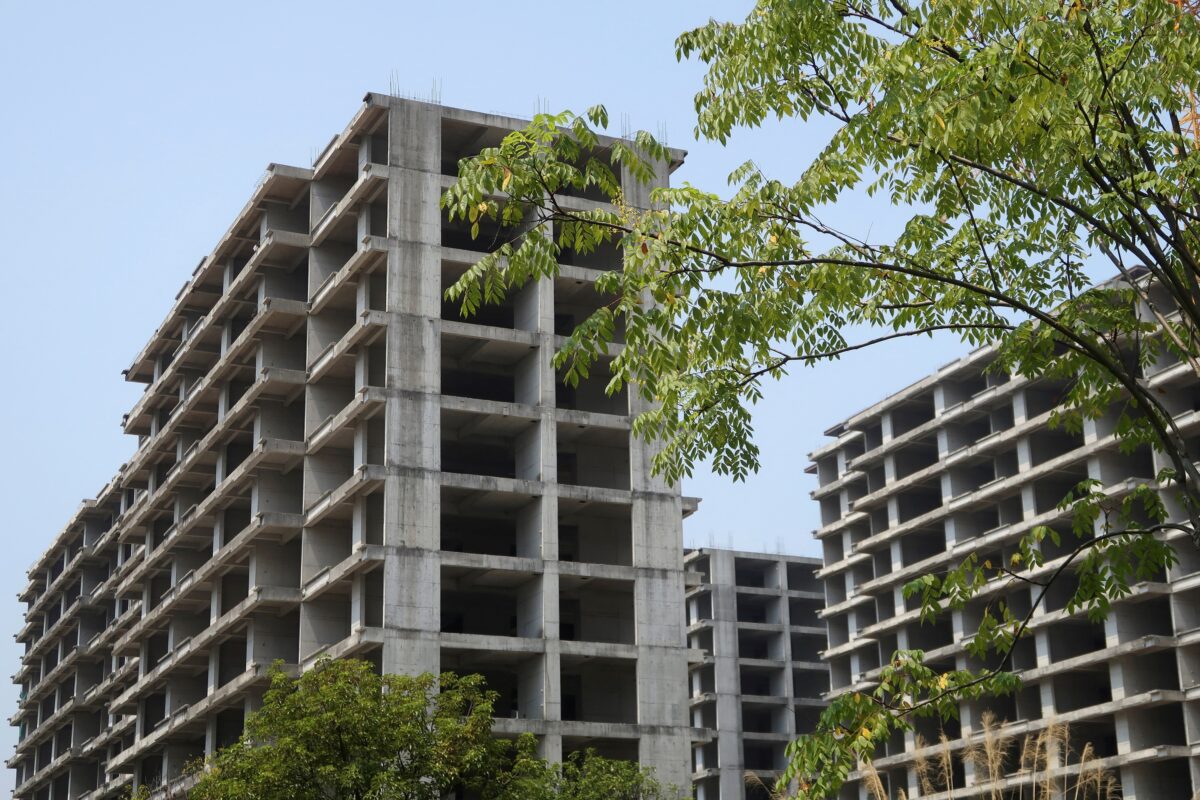Analysts Still Cautious on China’s Economy
News Analysis The Chinese economy has rallied since the termination of COVID-19 lockdowns, but the recovery may be short-lived as global demand wanes and systemic domestic economic problems persist. China’s stock markets have regained much of their 2022 losses, and the country’s economic growth forecasts are higher this year than they were last year. However, with the exception of COVID lockdowns Beijing claims have ended, the economy is facing the same internal and external threats that it has over the last several years: lack of domestic consumption spending, staggering public debt, an embattled real estate sector, diminishing demand for Chinese exports abroad, high youth unemployment, an aging population, the impact of the Ukraine war, global inflation, U.S. fed rate hikes, and uncertainty about Chinese leader Xi Jinping’s next crackdown. Investors are buying up Chinese stocks again, and many are closing out short bets they made against the Chinese market. But investors aren’t confident about China’s economic outlook. Their pessimism shows in Chinese stock prices, which are still below their benchmarks. In September, the percentage of stocks owned by foreigners had dropped below 4 percent. Since then, sentiment has been improving, as has the share of foreign-owned holdings. The CSI 300, a weighted index of stocks on Chinese exchanges, declined by nearly 40 percent last year, but has since recovered by 16 percent. Similarly, Hong Kong’s Hang Seng Index has regained 48 percent of its value after losing 58 percent last year. Meanwhile, the chief China economist at DBS bank, Chris Leung, has warned that a fast stock rebound should not be conflated with a fast economic recovery. Investors are still concerned about the near-term Chinese economy, sluggish consumer consumption, an unstable housing market, as well as potential sanctions against Beijing for supporting Russia in Ukraine. Most of China’s current rally stems from investors coming back to the China market and not necessarily from new investors or money flowing in. The World Bank set its China GDP growth projection at 4.3 percent for this year, while Goldman Sachs predicts 5.5 percent. Part of Goldman Sachs’ decision to increase the forecast was based on a GDP rally in the final quarter of 2022. But this rally could have been caused by one-time increases in demand for medicine and other medical supplies linked to a COVID surge after reopening. The World Bank’s lower growth projection is predicated on current negative economic factors such as high youth unemployment, which still stands at nearly 17 percent even after reopening. This is especially troubling as China’s population is also aging. Soon, there will be less than three young people supporting each senior citizen, and about 17 percent of those young people do not have jobs. China’s debt burden also remains staggering. Public and private debt currently amounts to $51.9 trillion, nearly three times the size of China’s GDP. To put this number in perspective, relative to the size of GDP, China’s debt is 40 percent larger than that of the United States. Meanwhile, as part of its economic stimulus, Beijing is considering authorizing local governments to issue an additional $560 billion of new debt. Unfinished apartment buildings stand at a residential complex developed by Jiadengbao Real Estate in Guilin, Guangxi Zhuang region, China, on Sept. 17, 2022. (Eduardo Baptista/Reuters) China’s real estate sector has been teetered on the brink of collapse under the weight of its debt for the past several years. At the same time, housing prices are still out of control. In Beijing, the average apartment costs nearly 40 times the average annual salary. By comparison, in New York, the average apartment costs less than six times the annual salary. In order to crack down on real estate speculation, which is believed to have driven the prices and debt to such astronomical levels, Beijing introduced a number of plans over the past three years. These plans have included the three red-lines policy and restricted lending to the housing sector, which accounts for 30 percent of the economy. Recognizing that a real estate crash would be devastating, the central government has changed pace and increased credit to the housing sector. So far, Beijing’s policies have only added to the national debt. The central government’s inability to create sensible policies to resolve the real estate crisis casts additional shadows on China’s economic recovery. No one knows what policies or what crackdowns Xi will take next nor what sort of damage his policies will do. This uncertainty is part of why consumption is stagnant. Chinese citizens are afraid to part with their cash. If the real estate sector tanks, the effects will be felt across the entire economy. The wild card or “Xi factor” is also spooking foreign investors. Inbound foreign direct investment (FDI) slumped 33 percent in November and 29 percent in December. Th

News Analysis
The Chinese economy has rallied since the termination of COVID-19 lockdowns, but the recovery may be short-lived as global demand wanes and systemic domestic economic problems persist.
China’s stock markets have regained much of their 2022 losses, and the country’s economic growth forecasts are higher this year than they were last year. However, with the exception of COVID lockdowns Beijing claims have ended, the economy is facing the same internal and external threats that it has over the last several years: lack of domestic consumption spending, staggering public debt, an embattled real estate sector, diminishing demand for Chinese exports abroad, high youth unemployment, an aging population, the impact of the Ukraine war, global inflation, U.S. fed rate hikes, and uncertainty about Chinese leader Xi Jinping’s next crackdown.
Investors are buying up Chinese stocks again, and many are closing out short bets they made against the Chinese market. But investors aren’t confident about China’s economic outlook. Their pessimism shows in Chinese stock prices, which are still below their benchmarks. In September, the percentage of stocks owned by foreigners had dropped below 4 percent.
Since then, sentiment has been improving, as has the share of foreign-owned holdings. The CSI 300, a weighted index of stocks on Chinese exchanges, declined by nearly 40 percent last year, but has since recovered by 16 percent. Similarly, Hong Kong’s Hang Seng Index has regained 48 percent of its value after losing 58 percent last year. Meanwhile, the chief China economist at DBS bank, Chris Leung, has warned that a fast stock rebound should not be conflated with a fast economic recovery.
Investors are still concerned about the near-term Chinese economy, sluggish consumer consumption, an unstable housing market, as well as potential sanctions against Beijing for supporting Russia in Ukraine. Most of China’s current rally stems from investors coming back to the China market and not necessarily from new investors or money flowing in.
The World Bank set its China GDP growth projection at 4.3 percent for this year, while Goldman Sachs predicts 5.5 percent. Part of Goldman Sachs’ decision to increase the forecast was based on a GDP rally in the final quarter of 2022. But this rally could have been caused by one-time increases in demand for medicine and other medical supplies linked to a COVID surge after reopening.
The World Bank’s lower growth projection is predicated on current negative economic factors such as high youth unemployment, which still stands at nearly 17 percent even after reopening. This is especially troubling as China’s population is also aging. Soon, there will be less than three young people supporting each senior citizen, and about 17 percent of those young people do not have jobs.
China’s debt burden also remains staggering. Public and private debt currently amounts to $51.9 trillion, nearly three times the size of China’s GDP. To put this number in perspective, relative to the size of GDP, China’s debt is 40 percent larger than that of the United States. Meanwhile, as part of its economic stimulus, Beijing is considering authorizing local governments to issue an additional $560 billion of new debt.

China’s real estate sector has been teetered on the brink of collapse under the weight of its debt for the past several years. At the same time, housing prices are still out of control. In Beijing, the average apartment costs nearly 40 times the average annual salary. By comparison, in New York, the average apartment costs less than six times the annual salary. In order to crack down on real estate speculation, which is believed to have driven the prices and debt to such astronomical levels, Beijing introduced a number of plans over the past three years. These plans have included the three red-lines policy and restricted lending to the housing sector, which accounts for 30 percent of the economy.
Recognizing that a real estate crash would be devastating, the central government has changed pace and increased credit to the housing sector. So far, Beijing’s policies have only added to the national debt.
The central government’s inability to create sensible policies to resolve the real estate crisis casts additional shadows on China’s economic recovery. No one knows what policies or what crackdowns Xi will take next nor what sort of damage his policies will do. This uncertainty is part of why consumption is stagnant. Chinese citizens are afraid to part with their cash. If the real estate sector tanks, the effects will be felt across the entire economy. The wild card or “Xi factor” is also spooking foreign investors. Inbound foreign direct investment (FDI) slumped 33 percent in November and 29 percent in December.
The global economy is having a negative impact on China’s economy. Exports rose a total of 7 percent in 2022 but were in a sharp downward trend as the year ended, with shipping out of China reduced by 8.7 percent in November and down 9.9 percent in December. Contracting demand in other countries was the main cause of this decline. This year, exports are expected to drop by 3 percent and imports by 1 percent as a result of decreased domestic consumption.
The outlook for 2023 is still mixed, with more negative than positive indicators. Global inflation and reduced demand for Chinese exports will plague the Chinese economy. Furthermore, ongoing rate hikes by the U.S. Federal Reserve will continue to draw investment into the United States and away from China.
At the same time, the high U.S. interest rate makes China’s foreign debt burden more costly. A lack of foreign investment will slow job creation in China. And with at least 11 million students about to graduate from university less than four months from now, it will be difficult for the central government to solve the youth unemployment problem without creating more debt.
Views expressed in this article are the opinions of the author and do not necessarily reflect the views of The Epoch Times.












